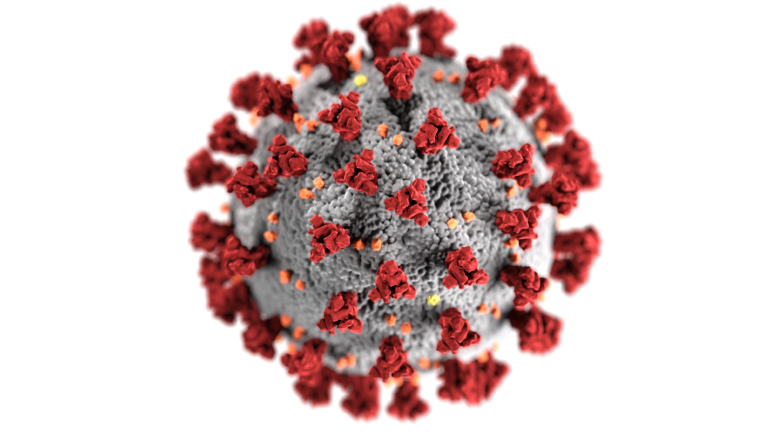Editor’s note: Sacramento County officials say it’s only bookkeeping, but advocates oppose any federal COVID-19 relief money going to the sheriff or probation
After the firestorm of criticism the last time they divvied up federal COVID-19 relief money, Sacramento County officials are trying to make clear they’re not shortchanging public health.
Officials say a resolution unanimously approved by the county Board of Supervisors on Wednesday is only designed to make sure the county doesn’t lose any federal money, which must be spent by Dec. 30 or returned.
Acting CEO Ann Edwards told supervisors that she understands the “sensitivity” of this issue to the community and the intent is to promote public health, not to give more money to law enforcement. She also said she hopes not to have to use this “administrative mechanism” again.
Public Health Officer Olivia Kaisrye said she supports the proposal because she trusts Edwards to make sure the money gets to public health. “It’s different this time,” she told supervisors.
At board Chairman Phil Serna’s suggestion, Edwards said she will draft a written commitment that additional money won’t go to the sheriff.
The proposal calls for $49.6 million in unspent CARES Act money to be allocated to county departments: $32.2 million to Probation Department payroll, $10.9 million to medical staff at county jails, $4.9 million to the Dine at Home program and homeless response and $1.6 million to the Sheriff’s Office.
Then, $49.6 million from the county’s general fund will be transferred to the Department of Health Services, so it can spend the money through June 30, 2021 on COVID-19 testing, contact tracing, vaccinations and other expenses. Of the total, $8.8 million in unspent money will be added immediately to the department for pandemic response.
“I can’t be any clearer about this: the Sheriff’s Office and the Probation Departments will not receive one additional penny in their respective budgets,” Cindy Nichol, the county’s interim chief fiscal officer, said in a statement. “All of the $49.6 million will go to the Department of Health Services, which in fact will receive $8.8 million more than its current budget.”
Officials say the Sheriff’s Office and Probation Department are targeted for the transfers because they are the county agencies that receive most general fund revenue.
And the key is to get past the Dec. 30 spending deadline and then come up with a detailed plan for using the CARES Act money, officials said.
But a frustrated Supervisor Patrick Kennedy said he wants to see a more detailed pandemic response proposal and a clearer explanation of why his suggestions get rejected when other jurisdictions are implementing them. “I’m at my wit’s end,” he said.
Serna agreed that supervisors haven’t received enough information on the plan, saying that “it’s kind of unbelievable” that there isn’t one nine months into the pandemic.
Supervisor Sue Frost called again for more help for small businesses, and right away. “Businesses may not make it another couple of weeks,” she said.
But some community advocates blamed supervisors for a lack of leadership. And they criticized the money swap as repeating the mistake earlier this year.
The Sacramento Homeless Union opposes giving any money to the sheriff that isn’t directly related to curbing the pandemic, pointing out that the office is refusing to enforce COVID-19 rules. And it points out that one reason that supervisors put county CEO Nav Gill on administrative leave is his handling of CARES Act money.
The Sacramento Poor People’s Campaign agrees, and says the money should go instead to hotel vouchers and vaccinations for homeless individuals and to expand eviction relief.
Some of the same advocates were outraged earlier this year when administrators allocated most of the county’s $181 million CARES Act share to pay sheriff’s and probation employees—and to avoid deep cuts to existing services. County budget officials say that of the $148 million allocated in 2019-20, $104.2 million went to the Sheriff’s Department, $21.6 million to the Probation Department and $6.2 million to the Health Services Department.
After learning of the transfers, and hearing that not all public health requests were being funded, supervisors in August approved $45 million more in CARES Act money for the COVID-19 battle.
That fight is even more dire now. In this week’s state update, Sacramento County had an average of 44.1 new cases daily per 100,000. That’s its highest rate yet of the pandemic; the rate was 31.6 on Dec. 8 and 4.4 on Oct. 20. In the last week, the county is adding about 800 to 900 new cases a day. On Wednesday, county Public Health reported 1,130 more cases and 12 deaths, putting the county above 700 total deaths.
The county, and the rest of the Sacramento region, is under a stay-at-home order until at least Dec. 31 with available ICU capacity at less than 15%.
“This is a critical time,” Kasirye said, with the surge and upcoming vaccinations.






Be the first to comment on "CARES Act funding, the sequel"